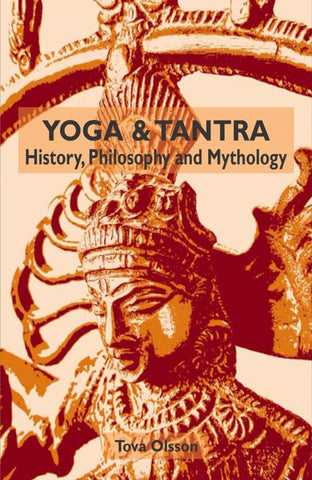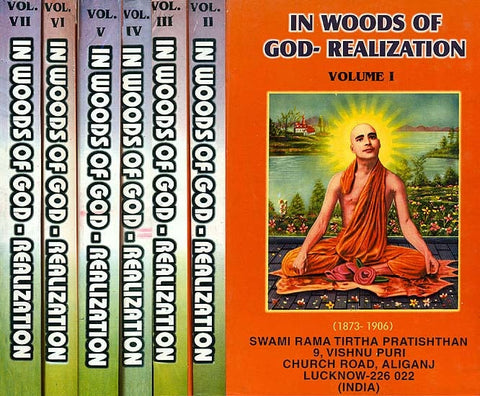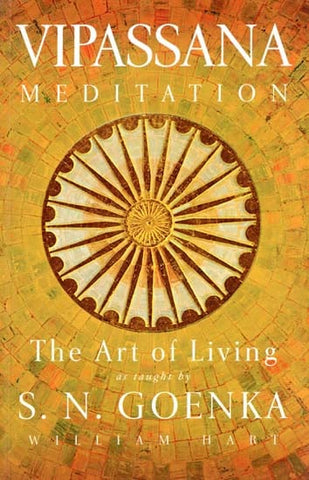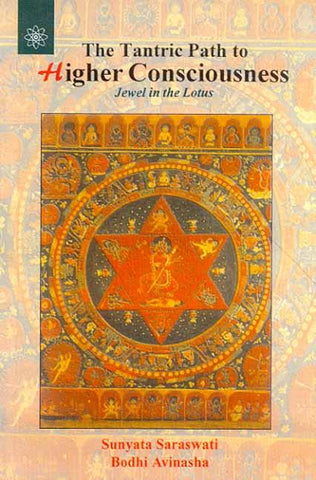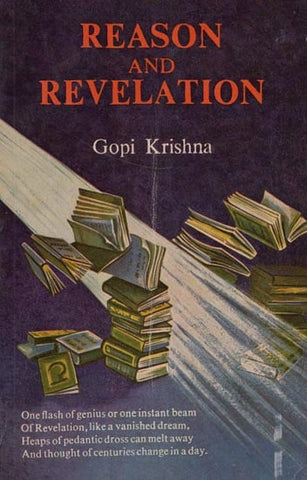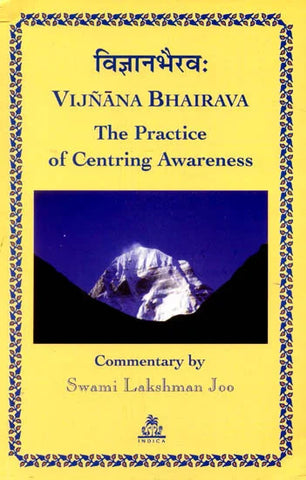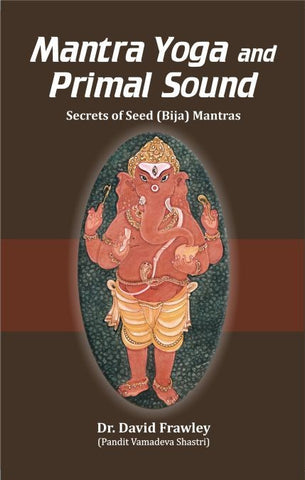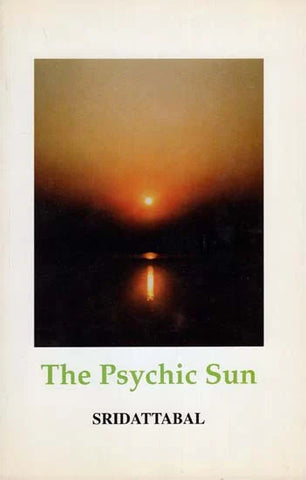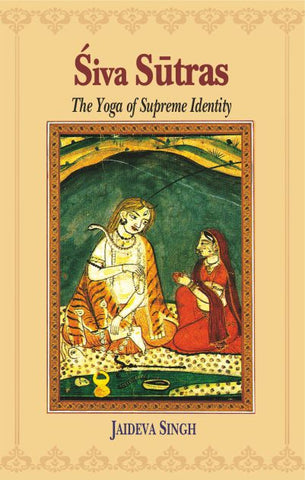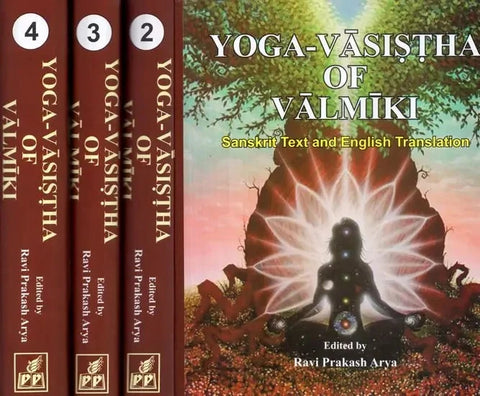Your cart is empty now.
The text translated here is a historical find: an unknown commentary on the Yoga sutra of Patanjali by Sankara, the most eminent philosopher of ancient India. Present indications are that it is likely to be authentic, which would date it about AD 700.
The many references to Yoga meditation in his accepted works have sometimes been regarded as concessions to accepted ideas of the time, and not really his own views. If he has chosen to write a commentary on yoga meditation, It must have been a central part of his own standpoint, although he was opposed to some of the philosophical doctrines of the official Yoga school. One would expect a tendency to modify those unacceptable doctrines if this text is really by Sankara. This turns out to be the case.
For those familiar with yoga meditation, who to go straight into the text, here is the method of presentation:
(1) The Basic text, the Yoga sutras of Patanjali (about AD 300), is displayed in large type thus:
Sutra I.1 Now the exposition of Yoga.
(2) Below each sutra is a (mostly brief) commentary by Vyasa (about AD 600). This is printed in italics, and set in from the left-hand margin. Sometimes this commentary is printed in separate paragraphs.
The word Now means that this is the beginning, and the topic now begun is understood to be an exposition of yoga.
(3) Below each section of the Vyasa commentary, and sometimes below the sutra itself, is the newly discovered Sankara sub-commentary (technically called a vivarana), printed in Roman type and not set in from the margin, thus:
No one will follow through with the practices and restrictions of yoga unless the goal and the related means to it have been clearly set out, and the commentator first explains what they were in the mind of the sutra author, so that people may be led to practice.
The structure of the Sanskrit text, which has to be followed in the translation, is that the words or phrases of the original sutra, then of Vyasa's bhasya commentary, have first to be quoted and glossed, in order. In this translation, the sutra or bhasya words being glossed in the main Sankara vivarana are given italics.
| Introduction for the general reader | 1 | |
| Technical introduction | 17 | |
| FIRST PART: SAMADHI | ||
| 1 | Yoga theory | |
| Sutra I.1 | Now the exposition of Yoga | 51 |
| Sutra I.2 | Yoga is inhibition of the mental processes | 60 |
| Sutra I.3 | Then the Seer is established in his own nature | 64 |
| Sutra I.4 | Otherwise, it conforms itself to the mental process | 65 |
| 2 | Mental Processes | |
| Sutra I.5 | The mental processes are of five kinds; they are tainted or pure | 69 |
| Sutra I.6 | Right knowledge illusion logical construction sleep memory | 70 |
| Surta I.7 | Right knowledge is either direct perfection inference or authority | 70 |
| Sutra I.8 | Illusion is false knowledge based on an untrue form | 88 |
| Sutra I.9 | Logical construction is something that follows verbal knowledge but has no real object | 90 |
| Sutra I.10 | The mental process which rests on the nation of non-existence is sleep | 93 |
| Sutra I.11 | Memory is not letting slip away an object experienced | 94 |
| 3 | Practice | |
| Sutra I.12 | Their inhibition is by practice and detachment | 97 |
| Sutra I.13 | Practice is the effort at steadiness in it | 97 |
| Sutra I.14 | But practised for a long time uninterruptedly and with the reverence it becomes firmly grounded | 98 |
| Sutra I.15 | Detachment is the consciousness of self-mastery of one who has no thirst for any object either seen or heard about | 98 |
| Sutra I.16 | It is the higher detachment when from knowledge of Purusa there is no thirst for (even) the guna-s | 99 |
| Sutra I.17 | It is cognitive because accompanied by verbal associations (vitarka)with subtle associations (vicara) with joy (ananda)and the form of I-am-ness (asmita) | 101 |
| Sutra I.18 | The other (samadhi) follows on the practice of the idea stopping and consists of samskara-s alone | 103 |
| Sutra I.19 | It results from birth in the case of gods discarnate and in the case of those who absorb themselves into prakrti | 104 |
| Sutra I.20 | For others, it comes after faith energy memory (cognitive) samadhi and knowledge | 105 |
| Sutra I.21 | For those who practice with ardent energy, it is near | 106 |
| Sutra I.22 | Even among the ardent, there is a distinction between mind or moderate or intense | 106 |
| 5 | God | |
| Sutra I.23 | Or by a special devotion to the Lord | 107 |
| Sutra I.24 | Untouched by taints or karma-s or their fruition or their latent stocks is the Lord who is a special kind of Purusa | 107 |
| Sutra I.25 | In whom the seed of omniscience becomes transcendent | 111 |
| Sutra I. 26 | The teacher of even the first teachers because not particularized by time | 129 |
| Sutra I.27 | Of him, the expression is pranava (OM) | 131 |
| Sutra I.28 | Repetition of it and meditation on its meaning | 134 |
| 6 | Obstacles | |
| Sutra I.29 | From that realization of the separate consciousness and absence of obstacles | 135 |
| Sutra I.30 | Illness apathy doubt carelessness laziness failure to withdraw misconceptions failure to attain a state instability (in the state)-these distractions of the mind are the obstacles | 136 |
| Sutra I.31 | Pain frustration restlessness of the body spasmodic breathing in or out are the accompaniments of these distractions | 138 |
| Sutra I.32 | To prevent their practice on one principle | 139 |
| 7 | Special Practices | |
| Sutra I.33 | The mind is made clear by meditation on friendliness towards the happy compassion for the suffering goodwill towards the virtuous and disinterest in the sinful | 146 |
| Sutra I.34 | Or by expulsion and retention of prana | 147 |
| Sutra I.35 | Or achievement of supernormal perception of a divine object brings the mind to steadiness | 148 |
| Sutra I.36 | Or a radiant perception beyond sorrow | 149 |
| Sutra I.37 | Or on a mind whose meditation is on freedom from passion | 150 |
| Sutra I.38 | Or meditating on the knowledge of dreams and sleep | 150 |
| Sutra I.39 | Or by meditation on what appeals to him | 151 |
| Sutra I.40 | His mastery extends right to the ultimate atom and to the ultimate magnitude | 151 |
| Sutra I.41 | Identification-in-samadhi (samapatti) is when the mental process has dwindled and the mind rests on either the knower or the knowing process or a known object and like a crystal apparently takes on their respective qualities | 152 |
| Sutra I.42 | The samadhi -identification is called sa vitarka when it is mixed up with mental constructs of word thing and idea | 156 |
| Sutra I.43 | When there is purification from memories (that samadhi) apparently empty of its own nature of knowledge with the object alone shining forth is nir-vitarka | 158 |
| Sutra I.44 | In the same way, when it is on subtle objects, it is called sa- vicara (with subtle associations) and nir-vicara (without subtle associations) | 164 |
| Sutra I.45 | The scale of (causal)subtlety of objects ends in pradhan | 165 |
| Sutra I.46 | These are samadhi from-a-seed | 167 |
| Sutra I.47 | From skill in nir-vicara a clearness in the self | 167 |
| Sutra I.48 | In this, the knowledge is truth-bearing | 167 |
| Sutra I.49 | This knowledge is of a particular thing unlike knowledge from authority or from inference | 168 |
| Sutra I.50 | The samskara produced by it inhibits other samskara-s | 169 |
| Sutra I.51 | When that too is produced by it inhibited everything is inhibited and thus this samadhi is without- seed | 171 |
| SECOND PART: MEANS | ||
| 1 | Yoga of action | |
| Sutra II.1 | Tapas, self -study, and devotion to the Lord are the yoga of action | 174 |
| Sutra II.2 | To actualize samadhi and thin out the taints | 177 |
| 2 | Taints | |
| Sutra II.3 | Ignorance, I-am-ness, desire, hate, and instinctive self-preservation, are the taints | 177 |
| Sutra II.4 | Ignorance is the field of germination of the subsequent ones, whether dormant or thinned out or checked or active | 179 |
| Sutra II.5 | Ignorance is the conviction of permanence, purity, happiness and self in what are really impermanent, impure, painful and not self | 185 |
| Sutra II.6 | The single selfhood, as it were, of the powers of the seer and seeing is I-am-ness | 191 |
| Sutra II.7 | Desire follows pleasure | 193 |
| Sutra II.8 | Hate follows pain | 193 |
| Sutra II.9 | With spontaneous momentum, instinctive even in a Knower is self-preservation | 193 |
| Sutra II.10 | In their subtle state, they are to be got rid of by dissolution in their source | 195 |
| Sutra II.11 | Mental processes arising from them are got rid of by meditation | 195 |
| Sutra II.12 | Rooted in taints is the karma stock to be felt in present or future lives | 196 |
| Sutra II.13 | While the root is there, it will bear the fruit of birth, life span and experience | 199 |
| Sutra II.14 | Their fruits are joy and suffering caused by virtue and sin | 210 |
| 4 | pain | |
| Sutra II.15 | Because of the sufferings caused by changes and anxieties and the samskara-s of them and from the clash of the guna-s to the clear-sighted, everything is pain alone | 211 |
| 5 | Guna-s | 217 |
| 6 | Release | |
| Sutra II.16 | What is to be escaped is the pain not yet come | 223 |
| Sutra II.17 | The Seer-Seen conjunction is the cause of what is to be escaped | 223 |
| 7 | Guna-s again | |
| Sutra II.18 | With a constant tendency towards light, action, and fixity, the Seen consists of the elements and the senses being for the purpose of experience and transcendence | 227 |
| Sutra II.19 | What Particularizes itself and what does not what goes (linga, the Great principle) and what does not (a-linga, pradhana), are guna-implementers | 233 |
| 8 | Purusa | |
| Sutra II.20 | The Seer is sight alone; though pure he looks on at the thoughts | 239 |
| Sutra II.21 | The essence of the Seen is to be for the purpose of him alone | 243 |
| 9 | Seer-Seen | |
| Sutra II.22 | For one purpose has been affected, it is ended, but not for others, because it is common | 244 |
| Sutra II.23 | The conjunction causes awareness of the natures of the two powers, the property and possessor | 245 |
| Sutra II.24 | Its cause is Ignorance (a- vidya) | 250 |
| Sutra II.25 | Without it, there is no conjunction, and that release is Transcendental Aloneness (kaivalya) of the power-of-sight | 252 |
| 10 | Release again | |
| Sutra II.26 | Unwavering knowledge- of -the difference is the means of release | 254 |
| Sutra II.27 | Therein, the ultimate state of Knowledge is seven-fold | 255 |
| 11 | Yoga | |
| Sutra II.28 | From following up the methods of yoga, destruction of impurity and a growing light of knowledge up to Knowledge-of -the-difference | 257 |
| Sutra II.29 | Restraints, observances, posture, restraint of vital currents, dissociation, concentration, meditation, samadhi are the eight methods | 260 |
| 12 | Restraints | |
| Sutra II.30 | Of these, harmlessness, truth- speaking no stealing brahmacarya, and not holding possessions are the restraints | 261 |
| Sutra II.31 | When practised universally without qualification of Birthplace time or obligation, they are called the Great Vow | 263 |
| 13 | Observances | |
| Sutra II.32 | Purity, contentment, tapas, self-study, and devotion to the Lord are the observances | 264 |
| 14 | Contrary ideas | |
| Sutra II.33 | If there is construction by contrary ideas, a meditation on their opposite | 266 |
| Sutra II.34 | The contrary ideas, violence and the others, done or caused to be done or approved of, preceded by greed anger or delusion, mild-medium, or intense-all result in endless pain and Ignorance. This is the meditation on their opposite | 267 |
| 15 | Perfections | |
| Sutra II.35 | With the establishment of harmlessness in his presence enmity is abandoned | 269 |
| Sutra II.36 | With the establishment of truth, events confirm his words | 269 |
| Sutra II.37 | With the establishment in non-stealing, all precious things come to him | 270 |
| Sutra II.38 | With establishment in Brahmacarya, the attainment of energy | 270 |
| Sutra II.39 | With firmness in not possessing property clear knowledge of the condition of birth | 270 |
| Sutra II.40 | From purity distaste for his own body and no intercourse with others | 271 |
| Sutra II.41 | Purity of mind- sattva, cheerfulness one-pointedness, the conquest of the senses and fitness for vision of the self | 271 |
| Sutra II.42 | From contentment attainment of unsurpassed happiness | 272 |
| Sutra II.43 | From the destruction of impurity by tapas, the perfection of body and senses | 272 |
| Sutra II.44 | From self-study, communication with the deity of his devotion | 272 |
| Sutra II.45 | From devotion to the Lord's perfection in samadhi | 273 |
| 16 | Controls | |
| Sutra II.46 | Posture is to be firm and pleasant | 273 |
| Sutra II.47 | By relaxing effort and by samadhi (samapatti) on infinity | 274 |
| Sutra II.48 | From that, he becomes immune to the opposites | 275 |
| Sutra II.49 | Pranayama is to sit in the posture and cut off the flow of in-breath and out-breath | 275 |
| Sutra II.50 | The external internal and fixating operations practised in terms of place time and of number became long and fine | 275 |
| Sutra II.51 | The fourth pranayama comes when both external and internal fields have been felt into | 278 |
| Sutra II.52 | Thereby is destroyed the covering of the light | 278 |
| Sutra II.53 | Fitness of the mind for concentrations | 278 |
| Sutra II.54 | Dissociation is when the senses disjoined from their respective objects assume as it were the nature of the mind itself | 278 |
| Sutra II.55 | From that supreme mastery of the senses | 279 |
| THIRD PART: GLORY | ||
| 1 | Inner Methods | |
| Sutra III.1 | Dharana is binding the mind to a place | 282 |
| Sutra III.2 | Continuity of the mind there is dhyana (meditation) | 282 |
| Sutra III.3 | That same (meditation), when it comes to shining forth as the object alone, apparently empty of its own nature as knowledge is called samadhi | 283 |
| Sutra III.4 | The tried (held) at the one place is samyama | 284 |
| Surta III.5 | From mastery of that the light of knowledge (prajna) | 284 |
| Sutra III.6 | Its application is by stages | 285 |
| Sutra III.7 | Compared to the previous means this tried is the direct means | 286 |
| Sutra III.8 | Even that is an indirect means as regards unseeded (Yoga) | 287 |
| Sutra III.9 | The inhibitive transformation of the mind is when extravertive samskara is overcome and the samskara of inhibition is predominant and the mind itself is in a temporary state of inhibition | 288 |
| Sutra III.10 | It has a peaceful flow, by reason of the samskara-s | 289 |
| Sutra III.11 | The destruction of the mind's depressiveness and rise of its one-pointedness is the samadhi transformation | 290 |
| Sutra III.12 | In that (samadhi) the sameness of the idea has subsided and the newly arisen idea in the mind is its transformation of one-pointedness | 290 |
| 2 | Change | |
| Sutra III.13 | By (analogy with) that are explained the transformations of dharma time-phase and basis (avastha) in the elements and in the senses | 291 |
| Sutra III.14 | What confirms the subsided uprisen and indetermination dharma- is the dharma | 303 |
| Sutra III.15 | The difference in sequence causes the differences in the changes | 306 |
| Sutra III.16 | From samyama on the three changes knowledge of what is past and future | 309 |
| Sutra III.17 | There is confusion from the mutual projection of words, meaning and ideas onto each other. From samyama on their distinctness (comes) an understanding of the cries of all beings | 310 |
| 4 | Glories | |
| Sutra III.18 | From the direct perception of the samskara-s , knowledge of previous lives | 327 |
| Sutra III.19 | (from direct perception through samyama)of his thought, knowledge of the mind of another | 328 |
| Sutra III.20 | But not the subject of those ideas, because that was not the field of the samyama | 329 |
| Sutra III.21 | From samyama on the form of the body its potentiality of being seen is nullified. Being disjoined from the light of the eye it disappears | 329 |
| Sutra III.22 | Karma is rapid or slow. From samyama on it or on omens there comes foreknowledge of death | 330 |
| Sutra III.23 | (From samyama) on friendliness and the others (compassion and goodwill sutra I.33) (there arise) powers | 331 |
| Sutra III.24 | Powers like the power of an elephant (come from samyama) on them | 331 |
| Sutra III.25 | By Projecting the light of supernormal radiant perception(I. 36) onto what is subtle hidden or remote (he comes to) the knowledge of that | 332 |
| Sutra III.26 | From samyama on the sun, knowledge of the worlds | 332 |
| Sutra III.27 | (from samyama) on the moon knowledge of the dispositions of the stars | 334 |
| Sutra III.28 | (From samyama)on the pole star knowledge of their motions | 335 |
| Sutra III.29 | On the navel circle knowledge of the plan of the body | 335 |
| Sutra III.30 | At the pit of the throat cessation of hunger and thirst | 335 |
| Sutra III.31 | On the tortoise nerve rigid steadiness | 336 |
| Sutra III.32 | On the light in the head vision of the perfect ones | 336 |
| Sutra III.33 | By pratibha supernormal knowledge too (he knows) everything | 336 |
| Sutra III.34 | On the heart awareness of the mind | 337 |
| 5 | Knowledge | |
| Sutra III.35 | Experience is an idea which does not distinguish sattva and Purusa though they are absolutely separate; by samyama on what is for its own sake (distinct) from what is for the sake of another there comes knowledge of Purusa | 337 |
| Sutra III.36 | From the arise of supernormal knowledge and hearing touch sight taste and awareness of events | 339 |
| Sutra III.37 | They are obstacles in samadhi but perfections in the extravertive state | 339 |
| 6 | Glories (continued) | |
| Sutra III.38 | From loosening of the cause of tying and awareness of how the mind moves the mind can enter another body | 340 |
| Sutra III.39 | By mastering the upgoing vital current (udana) he passes untouched over water mud thorns and so an and at death he takes the upward course | 340 |
| Sutra III.40 | From mastery of samana blazing light | 341 |
| Sutra III.41 | From samyama on the relationship between hearing and space divine hearing | 342 |
| Sutra III.42 | From samyama on the relation between the body and space followed by identification in samadhi (samapatti) with the lightness of a thread he travels through space | 343 |
| Sutra III.43 | The great bodiless is a mental process (vrtti) functioning exterior (to the body) and not imaginary; from this comes dwindling away of the covering of the light | 343 |
| Sutra III.44 | From samyama on their physical form inherence and purposefulness: the conquest of the elements | 344 |
| Sutra III.45 | From it (the samyama)manifest a set of eight powers like becoming minute and perfection of the body with freedom from impediment for its (bodily) attributes | 348 |
| Sutra III.46 | The perfection of the body is grace splendour power and diamond hardness | 350 |
| Sutra III.47 | From samyama on their perception, essential nature I am ness inherence and purposefulness (comes)conquest of the senses | 350 |
| Sutra III.48 | From that speediness of the mind independence of physical organs and conquest of nature | 351 |
| Sutra III.49 | Having simply the knowledge that (mind-) sattva and Purusa are different one has omnipotence over all beings and is omniscient | 352 |
| Sutra III.50 | From Indifference to that, too the seeds of imperfection are destroyed and there is Transcendental Aloneness | 553 |
| Sutra III.51 | No reaction of attachment or pride in case of invitations from rulers of celestial realms for undesirable consequences follow | 354 |
| 7 | Transcendental Aloneness | |
| Sutra III.52 | From samyama on the instant and on the two sequences of instants comes knowledge born of discrimination | 356 |
| Sutra III.53 | From this (knowledge) there is clear knowledge of two things (seemingly) equivalent because they cannot be distinguished by class characteristics or position | 358 |
| Sutra III.54 | Knowledge born of discrimination having all times for its object is called Transcendent | 361 |
| 8 | Transcendental Aloneness | |
| Sutra III.55 | When the (mind-) sattva is like Purusa in purity there is Transcendental aloneness. So it is | 362 |
| FOURTH PART: TRANSCENDENTAL ALONENESS (KAIVALYA) | ||
| 1 | Perfections | |
| Sutra IV.1 | Perfections (siddhi) arise from birth or from drugs or from mantras- s or from tapas or from samadhi | 366 |
| Sutra IV.2 | The transformation into another life is implemented by prakrti | 367 |
| Sutra IV.3 | The cause is not the impelling drive itself but it makes a breach in the retaining barrier of the nature as does a farmer (for irrigation) | 367 |
| Sutra IV.4 | The minds are projected from bare I-am-ness | 369 |
| Sutra IV.5 | In the variety of activities, it is the one mind that simples the several minds | 369 |
| Sutra IV.6 | Of those (minds with perfections)the mind whose perfections arise out of meditation (dhyana) has no karma-stock | 370 |
| 2 | Karma | |
| Sutra IV.7 | The karma of the yogin is neither white nor black; of the others, it is of three kinds | 370 |
| Sutra IV.8 | Therefore their consequent manifestation is of those samskara groups (vasana) that are compatible with it | 374 |
| Sutra IV.9 | Because there is sameness of form of memory and samskara-s there is consequent succession between them even though separated by class and place and time | 376 |
| Sutra IV.10 | They are beginningless because hope is eternal | 377 |
| Sutra IV.11 | They are held together by cause-effect repository focal point When these cease they too cease | 379 |
| Sutra IV.12 | What are past and future do actually exist but there is a difference of time -phase in their dharma-s | 381 |
| 3 | Time | |
| Sutra IV.13 | They are manifest or subtle and consist of the of guna-s | 385 |
| Sutra IV.14 | A thing is what it is by the fact of a unitary change | 387 |
| 4 | Against Buddhism | |
| (Sutra IV.14, continued) | ||
| Sutra IV.15 | Since there is a difference of the minds while the object is the same the two must be distinct categories | 389 |
| Sutra IV.16 | It is not dependent on a single mind for when it was not giving rise to valid cognition in that mind what would it be? | 392 |
| Sutra IV.17 | According to whether the mind is coloured by it a thing is known or unknown | 394 |
| Sutra IV.18 | To Him the Lord the mental processes are always known from the fact of the unchangeability of Purusa | 395 |
| Sutra IV.19 | It (mind) is not self-illumining, because it is itself something perceived | 397 |
| Sutra IV.20 | They cannot both be clearly ascertained at the same time | 399 |
| Sutra IV.21 | If it is to be seen by another idea further and yet further ideas will be required. And there will be confusion about memories | 400 |
| Sutra IV.22 | In the assumption of its (the mind's) form on the part of the unmoving consciousness is awareness of the idea of the self | 402 |
| 5 | Mind | |
| Sutra IV.23 | Mind coloured by the seer and seen has the various purposes | 404 |
| Sutra IV.24 | Though it is a mélange of countless samskara-groups, it must exist for the purposes of another because it is a construct | 406 |
| 6 | Release | |
| Sutra IV.25 | For him sees that One apart cessation of meditation on his own being | 408 |
| Sutra IV.26 | Then the mind is inclined to discrimination and is borne on towards Aloneness | 409 |
| Sutra IV.27 | At intervals in it other ideas arise from samskara-s | 409 |
| Sutra IV.28 | The escape from these is like that described in the case of the taints | 410 |
| Sutra IV.29 | For one who is through and through a man of discriminative knowledge but is not grasping over his meditation practice there comes about the samadhi called Raincloud of Dharma | 410 |
| Sutra IV.30 | From that cessation of taints and karma-s | 411 |
| Sutra IV.31 | Then with the infinity of knowledge free from all veiling taint the knowable comes to be but a trifle | 412 |
| Sutra IV.32 | With that the guna-s have fulfilled their purpose and the succession of their changes comes to an end | 413 |
| Sutra IV.33 | The succession is conjoined to each instant, (but) recognizable at the very end | 413 |
| Sutra IV.34 | Transcendental Aloneness is the withdrawal of the guna-s now without any purpose of purusa; or it is the establishment of the power-of -consciousness in its own nature | 417 |
| (Salutations and colophon) | 418 |


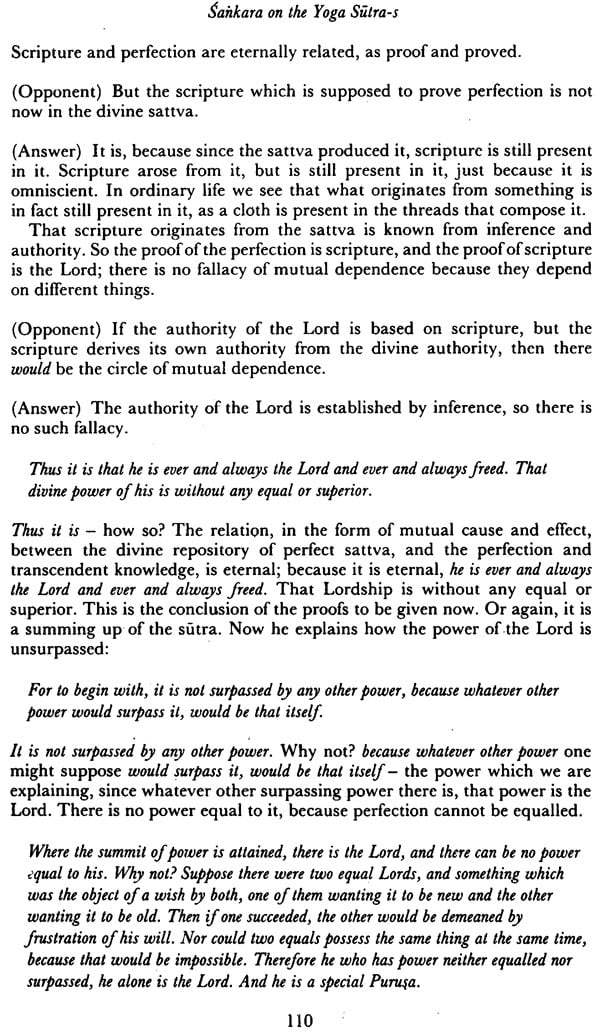
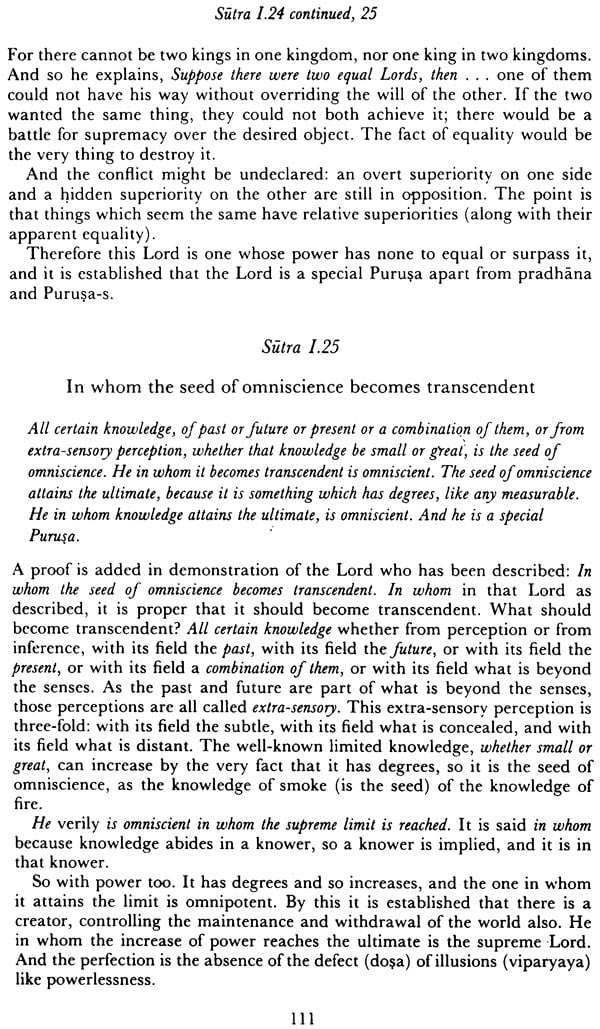




Delivery and Shipping Policy
- INTERNATIONAL SHIPPING
- Rs.1000-1100/kg
- ESTD. Delivery Time: 2-3 weeks (depending on location)
- Bubble Wrapped with Extra Padding
- NATIONAL SHIPPING
- NCR: Rs. 30/half kg
- Standard: Rs. 80/half kg
- Express shipments also available on Request
- ESTD. Delivery Time: Ranging from 1-4 days up to 7 business days (Depending on your choice of Delivery)
- TRACKING
- All orders; national or international, will be provided with a Tracking ID to check the status of their respective orders
- Depending on the Shipping Service, Tracking ID may be used on their respective tracking portals
Frequently Asked Questions (FAQs)
Domestic Shipping: 3-4 Days (after shipping)
International Shipping: 1-2 weeks (based on your location)
You will receive an email once your order has been shipped or you can email us if you didn't receive tracking details (info@mlbd.co.in)
Every book that we sell is the latest edition except all the rare books
Yes, we do provide free shipping, only on domestic orders (within India) above Rs.1500


